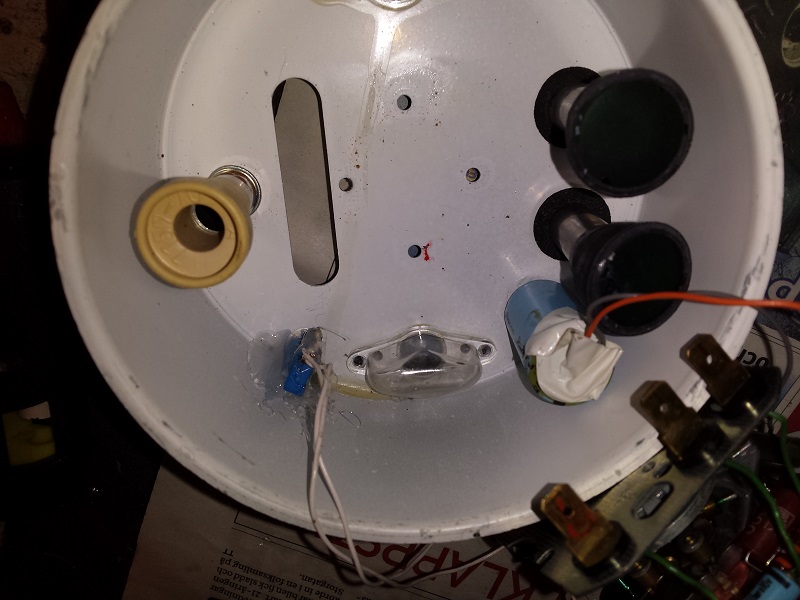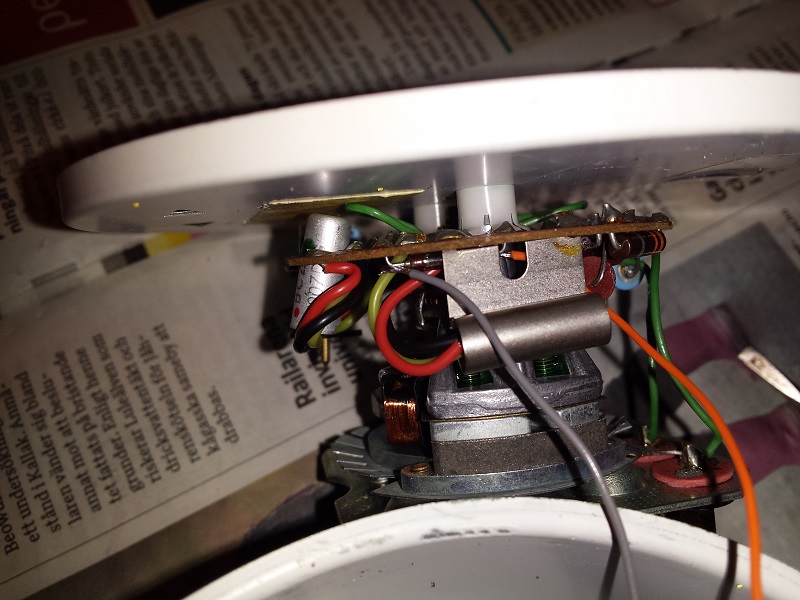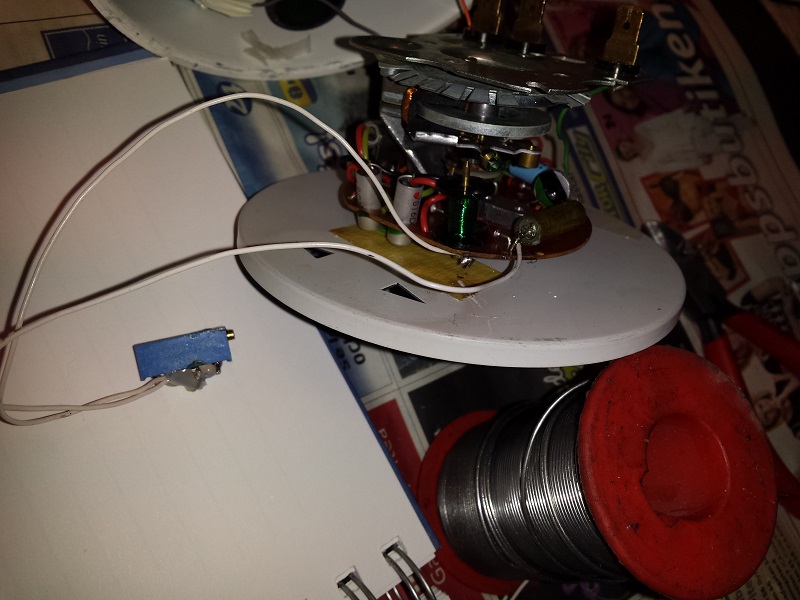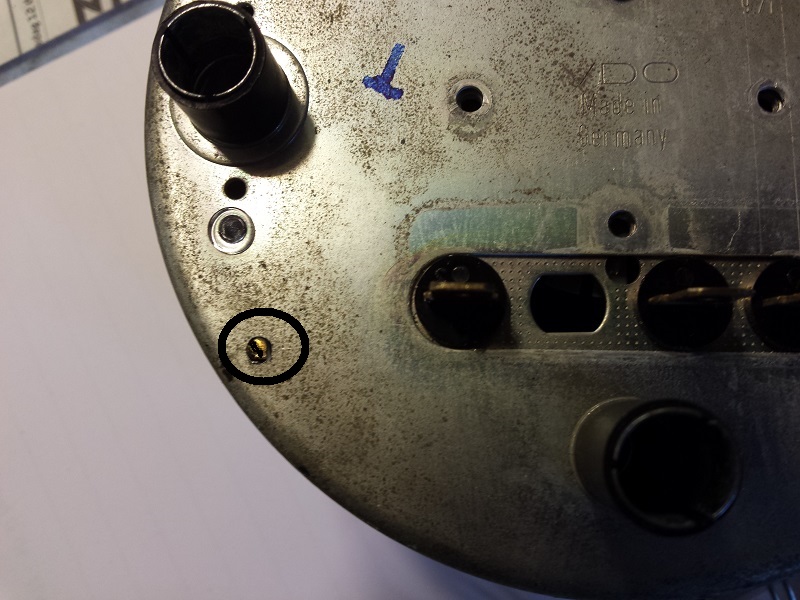NOTE, the below links shows gauges of many generations, some tips may not be valid for some tachos! Also with these tips I just want to show how I did it with no guarantees that it will work for others.
This article describes how to open the tach:
Open the Tach
This thread describes how to reduce the bouncing by adding a 2200uF electrolytic capacitor.
Reduce bouncing
This tread hints about the wire wound resistor R2 being the calibration resistor.
Caibration resistor
My tach is of the early 914 type, (I think the circiut was slightly changed in 73-74), the procedure may not be identical to later ones.
After opening the gauge I glued the condenser next to the right turn signal lens, also I glued the new calibration potentiometer.I drilled a small hole so that the potentiometer schrew can be reached without opening the tach again:

I found the connection points for the condensator to be on each side of the diode (partly hidden in the Picture), important to not mix plus and minus at the new condensator:

Before I started soldering the potentiometer I found out by testing that I had to reduce the resistance from the existing calibration wire wound resistor "R2".
I used a potentiometer 0 to 2000 Ohms and connected it in parallel to R2 (did not want to cut the old one if I did not have to).
The adjusted value on my potentiometer was around 1000 Ohms (checked with engine running and also a reference tach connected at the same time).

Through the little hole at the back I can make adjustments:

I can now calibrate the gauge from outside (I guess the drift comes from components on the circuit bord getting old so I easily can re-calibrate at more aging).
The bouncing was reduced a lot but not fully elliminated, it is now on the level that I can live with it.
/Lars S
